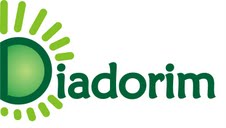Wooden cyborgs: technomythic profanations of drag queen aesthetics in the popular religiosity of Cariri from Ceará
DOI:
https://doi.org/10.9771/peri.v1i16.38195Abstract
Chisels, wax and paint in the foam of the body carved in the wood. From the essay “A rib of Adão” by photographer Giovanna Duarte for the fifth edition of Jornal Sertão Transviado, launched in 2017 through an experimental journalism project, we reinterpreted Donna Haraway’s cyborg theory in a localized context. In this sense, we use the methodology of documentary analysis of photography in its expressive dimension to look for the meanings of the drag queen body in the popular culture of Cariri, from the state of Ceará. Altogether there are seven photographs showing the Phantom and Malina drags among the sculptures of the Mestre Noza Popular Culture Center in the city of Juazeiro do Norte, better known as the land of Father Cícero. Far from a technoutopy, we face the affective policies in artivism between the cyborg and the goddess to think about the hybrids between gender and popular culture, above all, by affecting the performative identity with the cultural tradition. From irony and blasphemy, we look at dissidences and technomitic artefactualisms in the cyberdrag body’s discursive imagery in its potent fusion with simulacra capable of hacking codes of reading of the body in popular religion.
Downloads
Downloads
Published
Versions
- 2021-08-16 (2)
- 2021-10-27 (1)
How to Cite
Issue
Section
License
Copyright (c) 2021 Ribamar José de Oliveira Junior, Walisson Angélico de Araújo

This work is licensed under a Creative Commons Attribution-NonCommercial 4.0 International License.
Autores que publicam nesta revista concordam com os seguintes termos:
Autores mantêm os direitos autorais e concedem à revista o direito de primeira publicação, com o trabalho simultaneamente licenciado sob Licença Creative Commons Attribution Noncommercial que permite o compartilhamento do trabalho com reconhecimento da autoria e publicação inicial nesta revista, sendo vedado o uso com fins comerciais.
Autores têm autorização para assumir contratos adicionais separadamente, para distribuição não-exclusiva da versão do trabalho publicada nesta revista (ex.: publicar em repositório institucional ou como capítulo de livro), com reconhecimento de autoria e publicação inicial nesta revista.
Autores têm permissão e são estimulados a publicar e distribuir seu trabalho online (ex.: em repositórios institucionais ou na sua página pessoal) a qualquer ponto antes ou durante o processo editorial, já que isso pode gerar alterações produtivas, bem como aumentar o impacto e a citação do trabalho publicado (Veja O Efeito do Acesso Livre).







